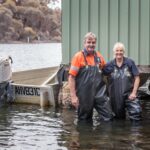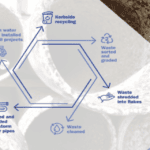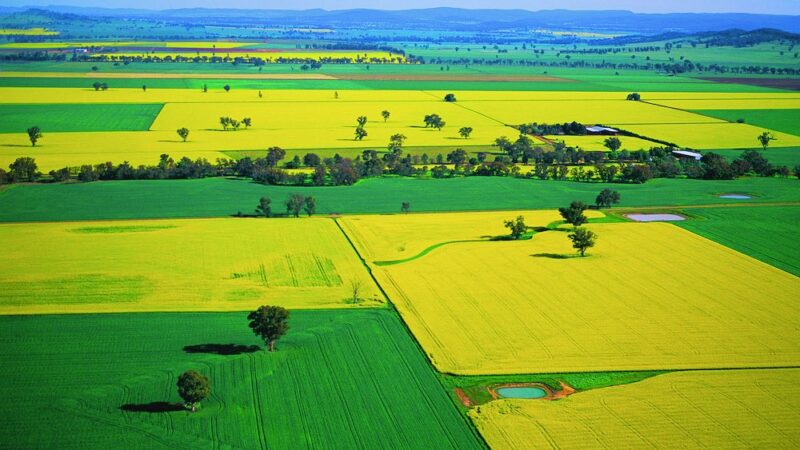The record-breaking numbers of the grains harvest � the latest ABARES forecast is 17.6 million…
Mouse explosion after bumper harvest
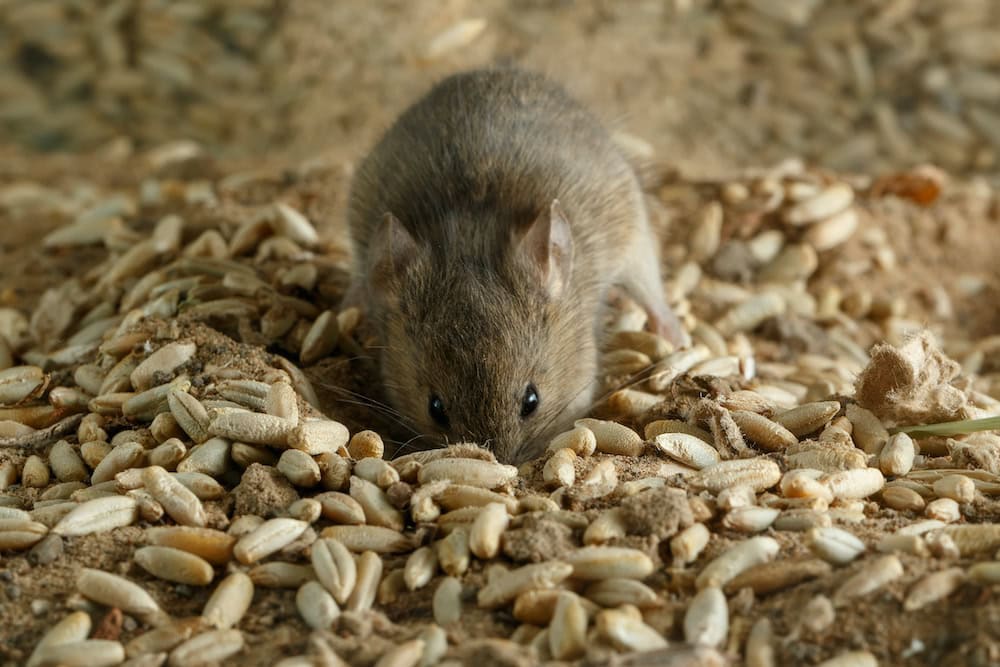
Recent plentiful rain has been life changing for many NSW farmers, but it has also provided a fertile breeding ground for a mouse explosion that is threatening parts of the state in plague-like proportions.
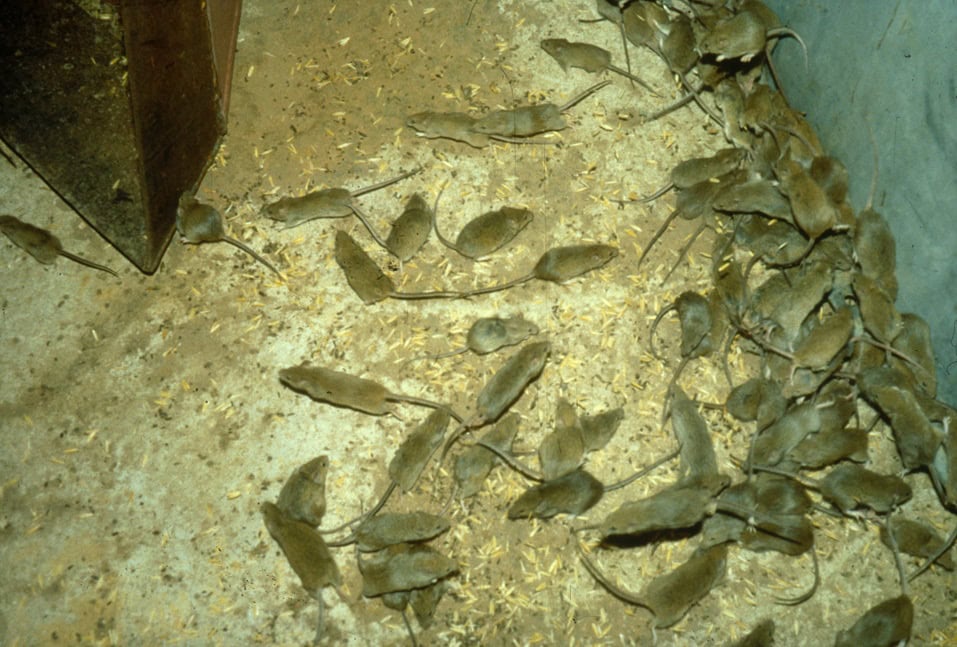
The outbreak has been steadily growing with fast-breeding mice now carpeting the state�s central west and north west as they feast on harvest leftovers and enjoy the warm weather.
The crisis has not yet been formally declared a plague, but agronomist and NSW Young Farmers Deputy Chair, Martin Murray, said it is definitely plague-like in central western districts like Coonamble, Armatree and Gulargambone.
�A lot of areas have bad mouse numbers, but many areas are probably hotspots and they are certainly in plague-proportions there,� Mr Murray, who farms at Delungra near Inverell, told The Muster.
�They are certainly making a mess getting into vehicles and getting into aircon and just making an absolute mess.�
The other issue they have been creating is for grain storage with mice regularly eating their way through plastic silo bags, with foxes often then jumping in to get to the mice.
�They are wreaking havoc on them, the one I had at my place I pulled it up just before Christmas and you�d think someone had shot holes in the bottom of it where mice were gnawing through and getting into it,� he said.
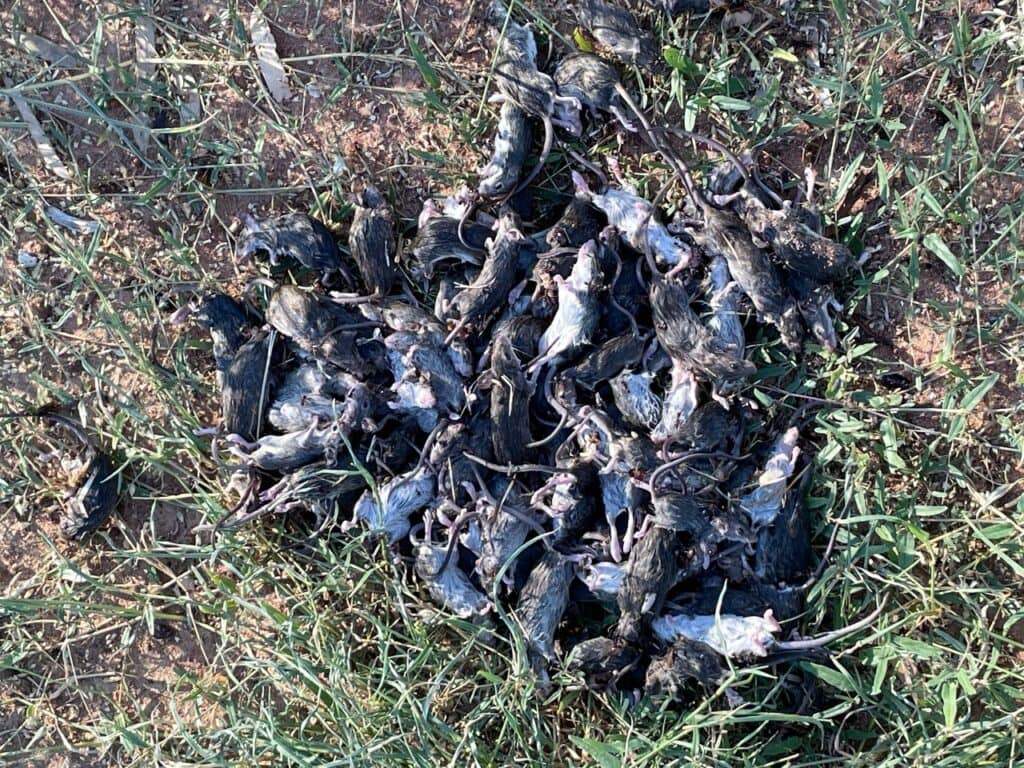
Outbreak heading south
It seems the outbreak is now heading further south with NSW Farmers Ag Science Committee Chair, Alan Brown, a grazier in the Wagga Wagga area, reporting increasing populations in his district.
�It appears as though it is heading that way,� Mr Brown said, when asked what the mouse situation was there.
�There are very heavy mouse populations around and I am seeing them everywhere I go. We had a big harvest so there is plenty of food around for them.�
Mr Brown believes the best option for farmers is to use seeds coated with the zinc-phosphide-based chemical, Mouse-Off, to bait the mice immediately after sowing winter crops. One coated seed is enough to kill one mouse and, he says, it leaves no residue that could potentially harm other predators.
The coating also makes the baited seeds a dark, mottled colour making them unattractive to birds, he said.
Mr Brown says when an outbreak is not so large, farmers simply buy sterilised Mouse-Off treated seeds and spread them on their fields.
But given the substantial numbers of mice, Mr Brown says this won�t cut it as it is too slow and expensive to do the job needed, especially when considering the size of some farms.
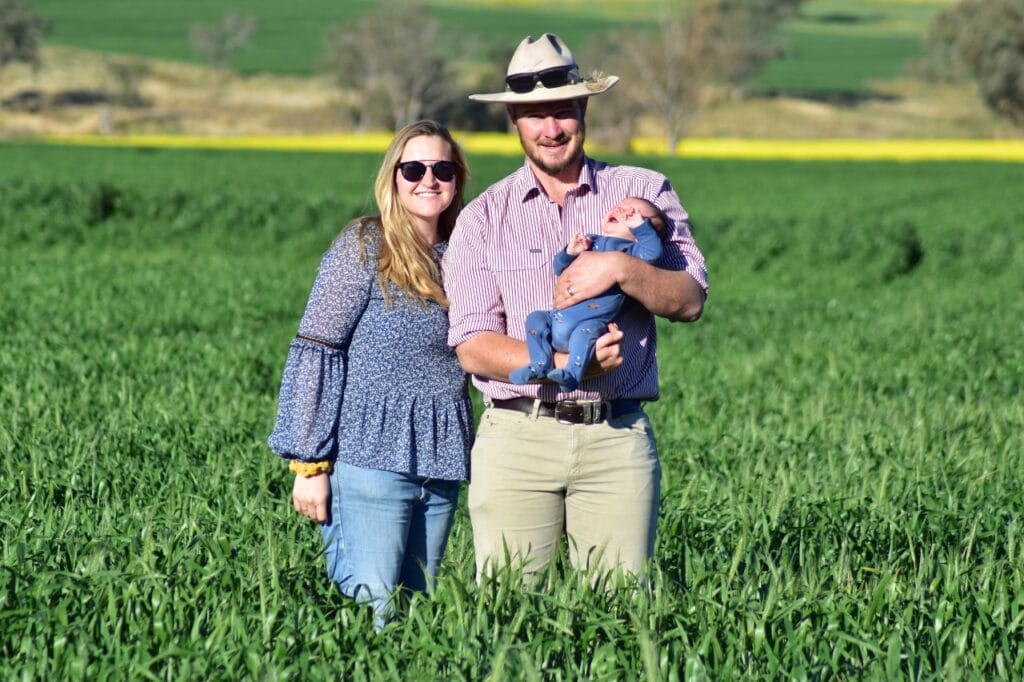
Mouse explosion means mobile seed treatment plants needed
Mr Brown said setting up mobile seed treatment plants where required so that farmers can have their own seed treated is an efficient and cost-effective measure.
�The treated grain will then all get picked up by the mice,� Mr Brown said.
�When the farmer spreads the baited grain you only need to be put one kilo per hectare and this is about three grains per square metre, so it is very minimal. One grain is enough to kill a mouse.�
Mr Brown says this mobile treatment system was used in 2012 when the last mouse plague hit the area.
He said a plant was set up on a farm near Wagga Wagga and then further south at Walbundrie and proved successful at controlling the outbreak.
�At the moment Mouse-Off is not hard to get but it is very expensive and when the pressure comes on, they just can�t produce enough of it and that�s why we need the mobile plants so farmers can have their own grain treated,� he said.
�By doing that you sidestep the sterilisation process because you don�t need to sterilise the grain if you are just feeding more of the same seed that you have just sown.
�The critical time is immediately after you have sown because that is when the mice are starving, and they are very clever because they know the drill rows have got seed in them.�

Preparing to sow again
With last year�s harvest now out of the way, many farmers are preparing to sow their next crop with canola due to be sown in March and a winter wheat crop ready to be planted in April, depending on moisture levels.
Mr Brown says farmers really need to start thinking about how they are going to do their planting and protect their crops.
Mr Murray also supports the mobile treatment plant idea.
�I would support that even if it wasn�t free and just covered the cost of the chemical, I would certainly be in support of that,� Mr Murray said.
�Unless a disease comes through and wipes them out, I don�t see anything changing.
�At this stage growers I know are all buying mouse bait for sowing, but I had one farmer just this morning tell me that if mice numbers don�t drop they may not even sow as they are not convinced that baiting will bring them under control.�
Freight impacts on supply
The other issue for Mr Murray was the availability of Mouse-Off, especially as global freight systems have been sent into disarray with COVID-19. �There is going to be a fair proportion of people that won�t think about it until they are about to sow and then they will start thinking about where to get some and who knows whether it will be available by then given the issues that are going on at the moment with global freight.�
Reporting mice in your area
It is essential that farmers report the prevalence of mice in their area to MouseAlert. The more farmers report on the mice situation in their area, the earlier biosecurity authorities will be alerted and enabling them to act. To record your local mice situation, please click here.
If you enjoyed this feature on the mouse explosion, you might like our story on the varroa mite.



